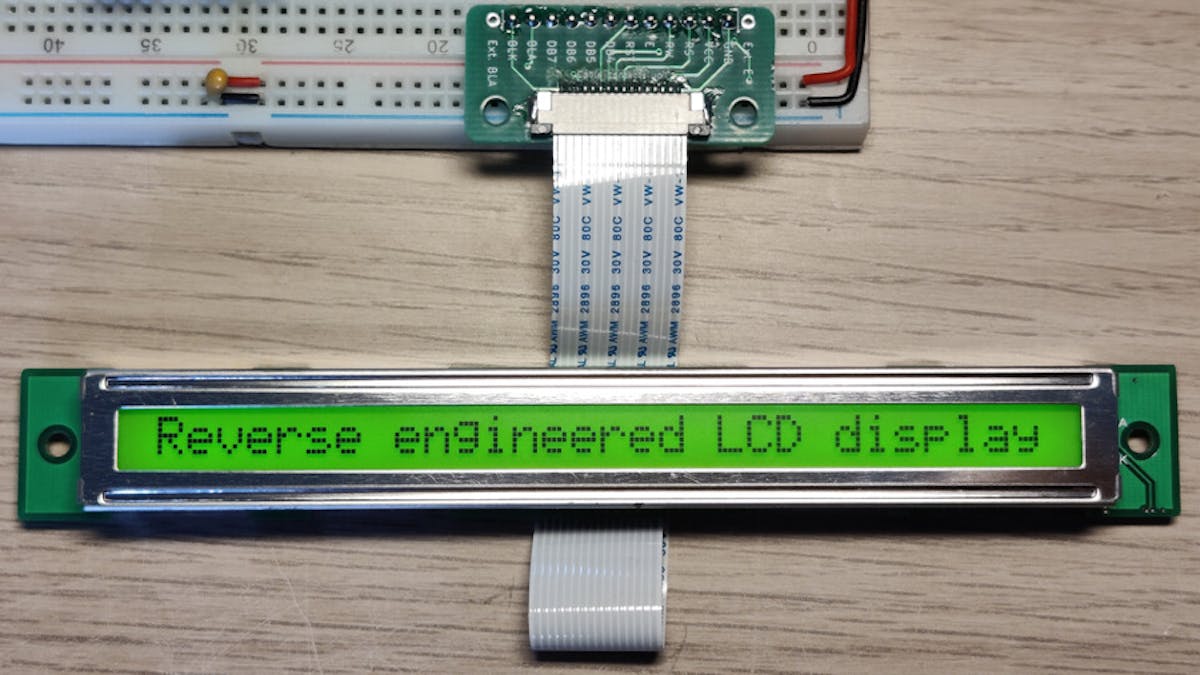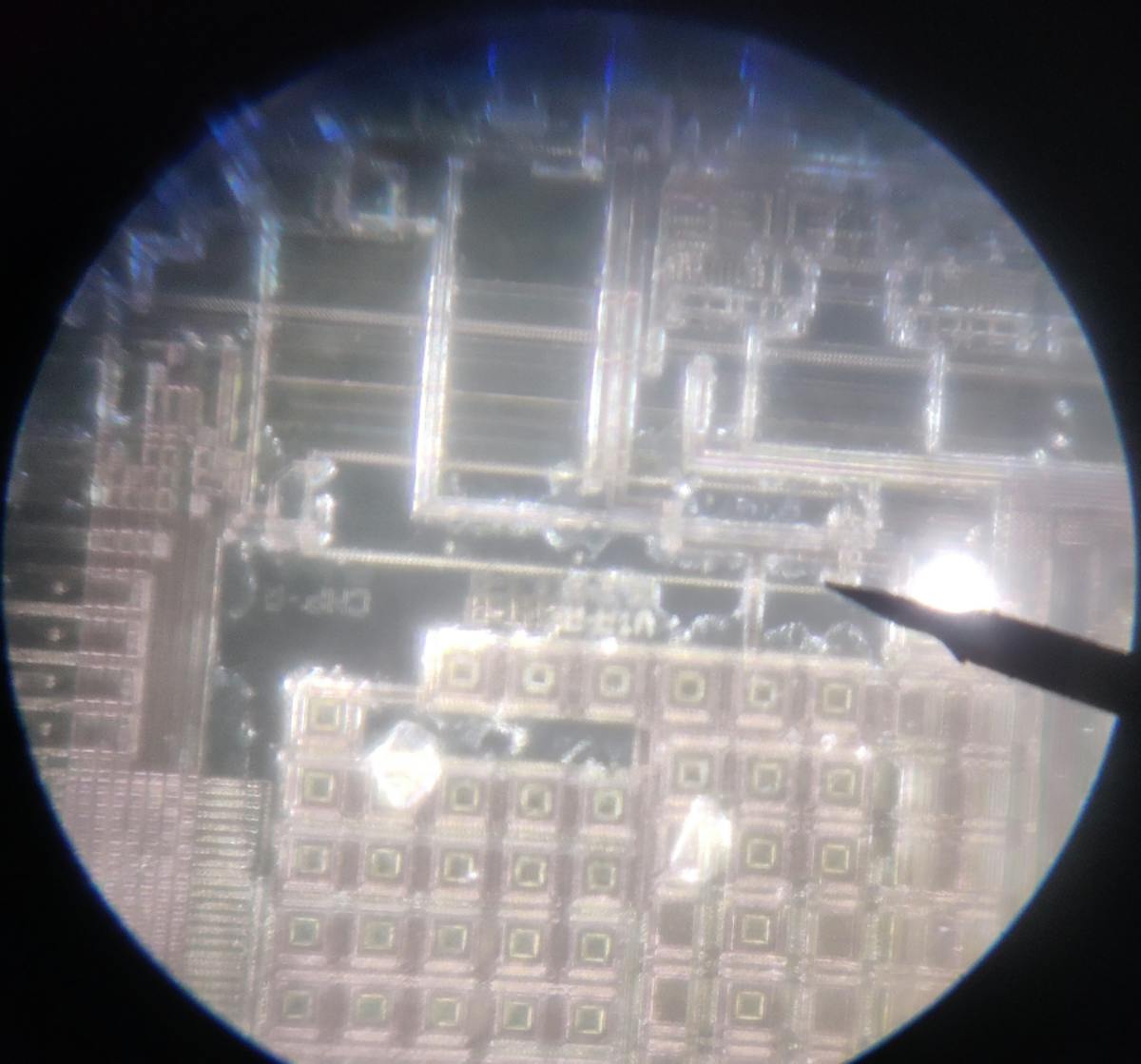Sudhir Chandra Reverse Engineers an Unusual Display with Sandpaper, Hot Air Gun, and a Microscope
When an undocumented and unusual display has an epoxy-covered COB as its driver chip, what can you do? Bust out the sandpaper.

Maker Sudhir Chandra happened upon a large quantity of single-line 32-column character displays, lacking anything in the way of documentation or drivers — so set about saving them from landfill by sanding a few chips down for some real hands-on reverse engineering.
"I got a hold of a lot of these 1×32 LCD displays, but I couldn't find a datasheet for them," Chandra writes by way of background to the project. "They didn't seem particularly interesting at first, but throwing out 150+ of them seemed like a huge waste. I realized later that I couldn't find another example of a 1x32 LCD display anywhere else, which does make them somewhat unique."

While the boards were marked with part and product numbers, neither brought up anything useful — aside from the manufacturer's website, which listed a range of other displays but no single-line devices like those. Inspecting the board had an extra challenge: the driver used a chip-on-board (COB) construction, covering the part in a thick blob of opaque black epoxy.
"The datasheets of the similar displays did include the driver chip they used, the ST7066," Chandra notes. "Looking at the ST7066's datasheet I realized that the required external components could also be found on my display's PCB. I was able to confirm with a multimeter that they were connected in the same way as mentioned in the datasheet."
That was part of the puzzle, but the display's pinout didn't match any known ST7066-based display. "As a last resort, I could try to decap the chip to measure what bond wires go where and figure out the pinout that way," Chandra says. "But I had never done this before. I also don't have access to nitric/sulfuric acid. However, I did find some videos of people using sandpaper or a heat gun to release the chips from their packages."
So that's exactly what Chandra did. While sanding the epoxy blob down, Chandra realised something other than the ST7066 must be at play: there was only a single chip hiding within the blob, and the ST7066 requires a support chip to offer more than 16 columns. Picking up a cheap microscope from a closed veterinary clinic and modifying it with a new light source, he switched to using a heat gun and a hobby knife to unveil markings on the chip's surface — but none were readable with the equipment at hand.
The breakthrough came when Chandra realized the chip was a lot more rectangular than most driver chips, revealing it to be an ST7070. "I compared the measured connections of the voltage divider to the locations in the pinout of the chip in the datasheet and it looked very promising," he explains. "By matching these connections I could further deduce where all the other wires went. I was able to trace the data bit and instruction pins to the pinout of the flat cable!"
With the Arduino LiquidCrystal library and a microcontroller wired for the unusual pinout of the displays, Chandra was able to fire one up for the first time — proving his efforts weren't in vain. To make life easier for the rest of the boards, Chandra used what he had learned to design a custom adapter board to bring out the display's flat flexible circuit (FFC) cable to a breadboard-friendly 0.1" header.
Chandra's full write-up is available on his website; he plans to write a custom library to make it easier to use the full width of the display, and is offering his spare display boards up for sale if anyone has a need for a 1×32 character display — an unusual beast in these days, it seems.
Freelance journalist, technical author, hacker, tinkerer, erstwhile sysadmin. For hire: freelance@halfacree.co.uk.

